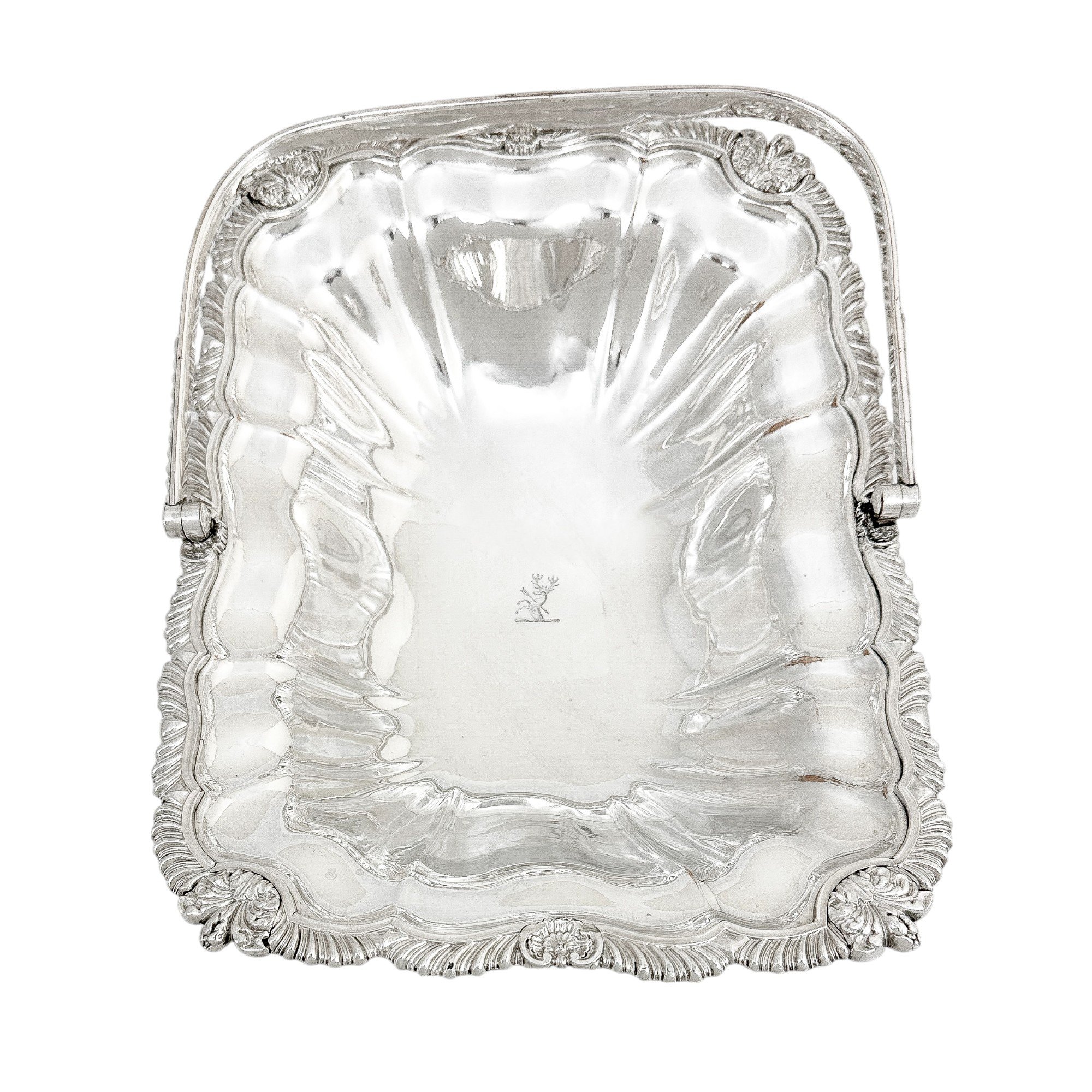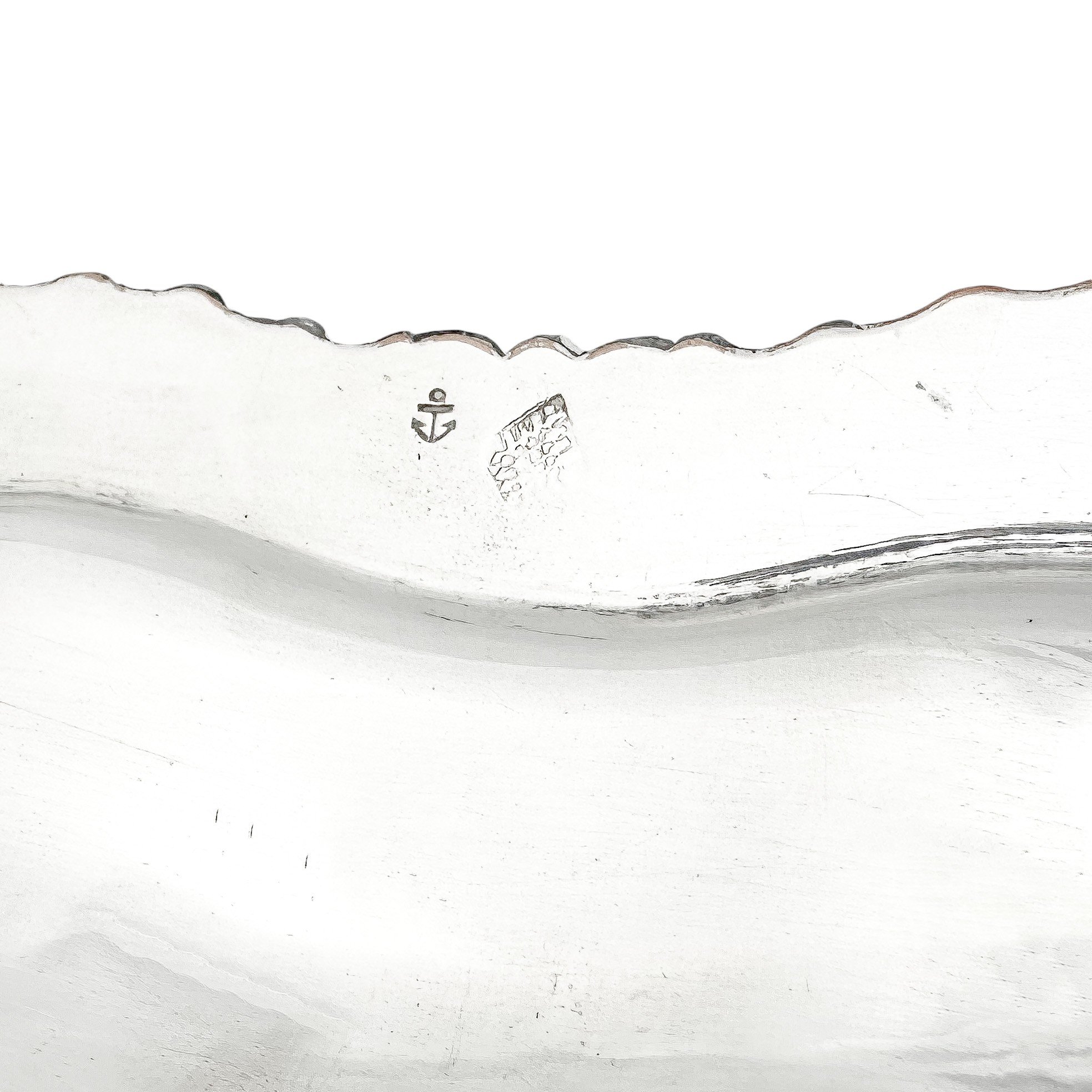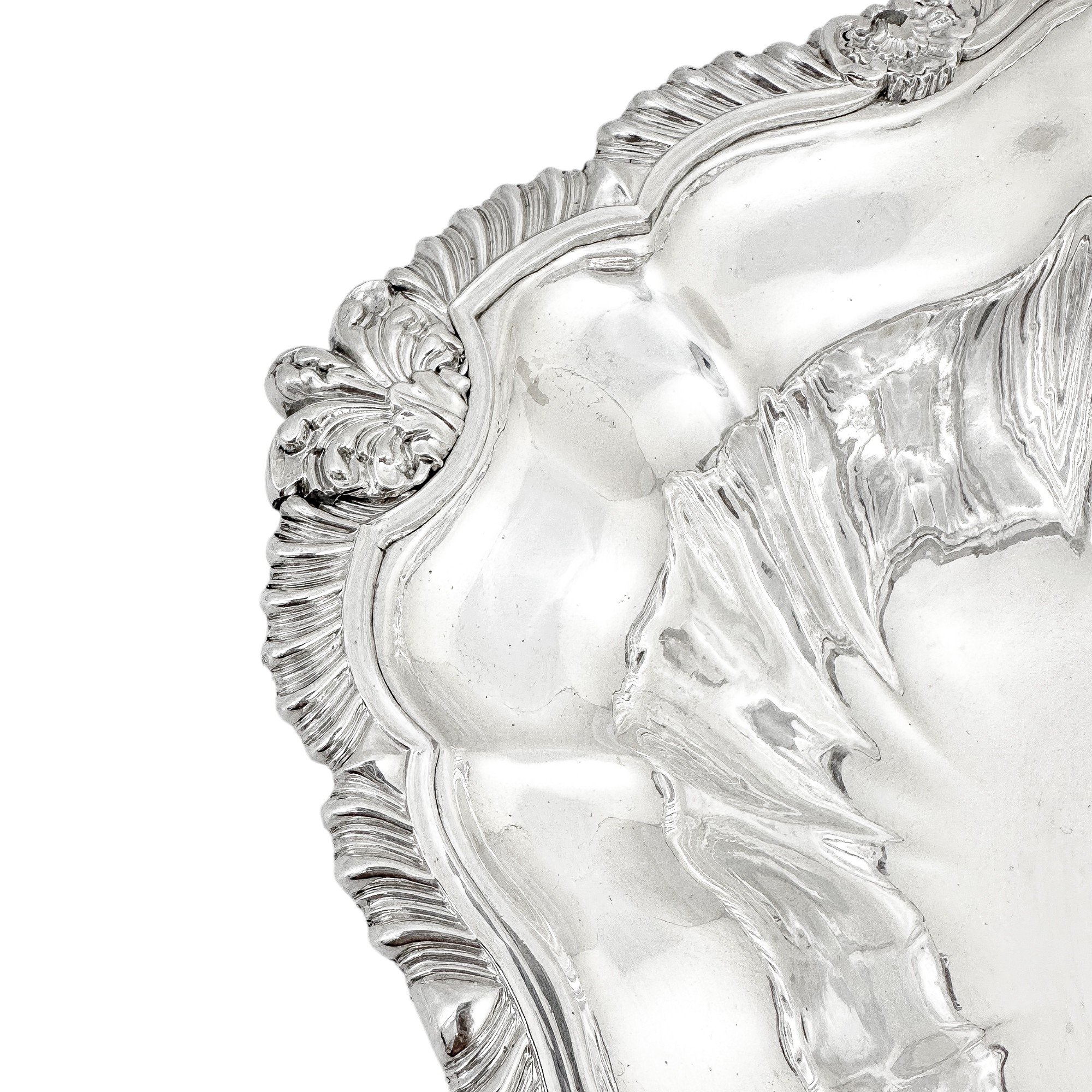 Image 1 of 13
Image 1 of 13

 Image 2 of 13
Image 2 of 13

 Image 3 of 13
Image 3 of 13

 Image 4 of 13
Image 4 of 13

 Image 5 of 13
Image 5 of 13

 Image 6 of 13
Image 6 of 13

 Image 7 of 13
Image 7 of 13

 Image 8 of 13
Image 8 of 13

 Image 9 of 13
Image 9 of 13

 Image 10 of 13
Image 10 of 13

 Image 11 of 13
Image 11 of 13

 Image 12 of 13
Image 12 of 13

 Image 13 of 13
Image 13 of 13














George III Old Sheffield plate large fluted basket with sterling aristocratic stag family crest
Magnificent Old Sheffield plate large swing-handled basket dating to the George III period and made by T & J Creswick. Oblong everted body in panelled in a lovely fluted design and raised on a low pedestal foot. The handle is reeded and accented with an applied rose flowerhead bouquet to the centre. The edge of the bowl is trimmed with a large gadrooned border that is decorated with scrolls and shells in typical Regency style.
As befits such an exquisite piece, this basket was commissioned by an aristocratic family. To the centre of the basket is an engraved armorial family crest of a stag (buck deer) in the "rampant" attitude (position), with its chest pierced by an arrow. A faint outline is visible around the deer - crests were included after the piece was made and they were made of sterling silver, hence the faint outline to the oblong panel.
The underside is marked with a sheaf of arrows which was taken from the Sheffield Coat of Arms and used by Thomas & James Creswick as their Sheffield plate mark from 1811 onwards.
Made by Thomas & James Creswick, Sheffield, c. 1810s.
1234 g
7 to 10 cm tall to edge
23 cm tall to handle
32 x 25 cm
Excellent antique condition. Some copper bleeding appropriate to age and use; light soldering and depression to the embossed decoration near one of the hinges.
Magnificent Old Sheffield plate large swing-handled basket dating to the George III period and made by T & J Creswick. Oblong everted body in panelled in a lovely fluted design and raised on a low pedestal foot. The handle is reeded and accented with an applied rose flowerhead bouquet to the centre. The edge of the bowl is trimmed with a large gadrooned border that is decorated with scrolls and shells in typical Regency style.
As befits such an exquisite piece, this basket was commissioned by an aristocratic family. To the centre of the basket is an engraved armorial family crest of a stag (buck deer) in the "rampant" attitude (position), with its chest pierced by an arrow. A faint outline is visible around the deer - crests were included after the piece was made and they were made of sterling silver, hence the faint outline to the oblong panel.
The underside is marked with a sheaf of arrows which was taken from the Sheffield Coat of Arms and used by Thomas & James Creswick as their Sheffield plate mark from 1811 onwards.
Made by Thomas & James Creswick, Sheffield, c. 1810s.
1234 g
7 to 10 cm tall to edge
23 cm tall to handle
32 x 25 cm
Excellent antique condition. Some copper bleeding appropriate to age and use; light soldering and depression to the embossed decoration near one of the hinges.
Magnificent Old Sheffield plate large swing-handled basket dating to the George III period and made by T & J Creswick. Oblong everted body in panelled in a lovely fluted design and raised on a low pedestal foot. The handle is reeded and accented with an applied rose flowerhead bouquet to the centre. The edge of the bowl is trimmed with a large gadrooned border that is decorated with scrolls and shells in typical Regency style.
As befits such an exquisite piece, this basket was commissioned by an aristocratic family. To the centre of the basket is an engraved armorial family crest of a stag (buck deer) in the "rampant" attitude (position), with its chest pierced by an arrow. A faint outline is visible around the deer - crests were included after the piece was made and they were made of sterling silver, hence the faint outline to the oblong panel.
The underside is marked with a sheaf of arrows which was taken from the Sheffield Coat of Arms and used by Thomas & James Creswick as their Sheffield plate mark from 1811 onwards.
Made by Thomas & James Creswick, Sheffield, c. 1810s.
1234 g
7 to 10 cm tall to edge
23 cm tall to handle
32 x 25 cm
Excellent antique condition. Some copper bleeding appropriate to age and use; light soldering and depression to the embossed decoration near one of the hinges.
Thomas & James Creswick, a father and son firm of Sheffield silversmiths. This family business was started in Sheffield by grandfather Richard Creswick, founder partner of Fenton, Creswick & Co (Matthew Fenton, Richard Creswick and William Watson). All active silversmiths and Sheffield platers, and among the first to enter their mark at the Sheffield Assay Office in 1773. Thomas & James Creswick, son and father partnership, registered their first Sheffield plate mark in 1811, being a crosskeys logo. The firm later became Creswick & Co in c. 1860.
Sheffield Plate, now known by collectors as "Old Sheffield Plate" was accidentally invented by Thomas Boulsover, of Sheffield's Cutlers Company, in 1743. While trying to repair the handle of a customer's silver knife, he heated it too much and the silver started to melt. When he examined the damaged handle, he noticed that the silver and copper had fused together very strongly. Experiments showed that the two metals behaved as one when he tried to reshape them, even though he could clearly see two different layers. Boulsover developed the technique of sandwiching an ingot of copper between two thin plates of silver, tightly binding it with wire and then heating it in a furnace. This was then milled into sheets from which objects were made.
The production of Sheffield Plate declined after 1840 when George Elkington invented electro silver plating which is why genuine Old Sheffield Plate items are so rare and highly regarded. Furthermore, electroplating tends to produce a "brilliant" surface with a hard colour – as it consists of pure rather than sterling silver and is usually deposited more thinly which causes it to lose silvering much quicker than Old Sheffield ware that still retains its beauty 250 years down the line.


